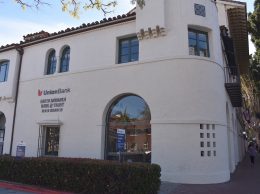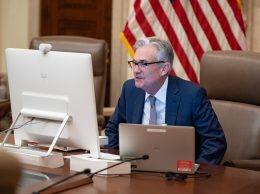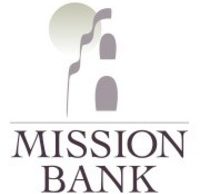Banks in no rush to repay TARP money
IN THIS ARTICLE
- Banking & Finance Topic
- Marlize van Romburgh Author
By Marlize van Romburgh Monday, November 8th, 2010
Two years after the U.S. Treasury Department rolled out its Troubled Asset Relief Program, the federal rescue plan for banks, eight of the nine banks based in the Tri-Counties that took those funds have not yet repaid them.
The one bank in the region that has repaid its TARP funds — Santa Barbara-based Pacific Capital Bancorp — did so as part of its $500 million rescue deal with a Texas private equity group, in which the Treasury agreed to exchange its original investment for common equity in the company.
The deal means Pacific Capital has officially repaid its Treasury obligations, but with the firm’s share price fluctuating wildly over the last several weeks, it remains to be seen whether taxpayers will actually see their investment made whole.
The latest report from the Treasury Department also shows that the eight other banks in the tri-county region that took TARP funds still owe a collective $79 million to U.S. taxpayers. There’s no firm deadline to pay the government back, but in 2013 the interest rate on TARP funds will go from 5 percent to 9 percent. Even those banks who’ve had successful capital raises in the past year say their immediate priorities lie with nursing their balance sheets back to health, not paying back government debt.
“Irrespective about all the negative press TARP has received, when we looked into that as an additional source of capital, we saw that it’s a very low-cost source of capital,” said Heritage Oaks Bank CEO Larry Ward. “That hasn’t changed.”
The Paso Robles-based bank completed a $60 million capital raise earlier this year, but has not paid back its $21 million TARP liability.
Ward said putting off TARP is a business decision. “As we all know, today capital is probably the single most important element of our balance sheet. Just paying it off wouldn’t be a smart thing to do for the bank,” he said.
He declined to say when his firm might start repaying the funds.
Janet Garufis is the president of Santa Barbara-based Montecito Bank & Trust, a privately held institution that said “no thanks” to TARP. Although her bank filled in an application when the program was first rolled out, it eventually declined Treasury assistance.
“All banks were encouraged early on to fill out the application and get it in. We did that, as was recommended to us by the regulatory agencies,” she said.
But as a privately owned community bank, Montecito was toward the end of the list of institutions to receive funds.
“The first banks to take TARP were the biggest banks,” Garufis said. “That gave us time to look into it more. As we learned more about TARP and how the rules were changing, we didn’t like the restrictions.”
TARP came with a number of strings attached, including added reporting requirements and, for many banks, restrictions on dividend payments, stock purchases and the issuance of debt.
“These are restrictions on how you could run your bank, basically,” Garufis said.
Banks still have $65B
The Treasury created TARP in 2008, in response to the financial crisis. With a price tag of $700 billion, the bank bailout disbursed funds to institutions large and small to shore up their balance sheets and open up lending.
Most of the nation’s largest banks, including Citigroup and Bank of America, left the program early on. But as of October, 600 banks are still sitting on about $65 billion in TARP funds, the Wall Street Journal reported.
Westlake Village-based First California Financial Group, parent of First California Bank, closed a public offering in March that netted it $39 million. Yet the banking firm has not repaid its $25 million TARP investment, according to the Treasury report.
First California CEO C.G. Kum did not return a call seeking his comments for this story, but he has told the Business Times in the past that the offering’s proceeds are earmarked for new lending and possible acquisitions.
Goleta-based Community West Bank also completed a successful $8.1 million capital raise in August. The Treasury report shows it hasn’t paid back any of its $15.6 million in TARP funds.
Community West President and CEO Lynda Nahra declined to comment for this article, but the bank has said it intends to use proceeds from the capital raise to strengthen its capital position and to grow.
First California recently narrowed its third-quarter losses from $448,500 last year to $284,000 this year. Community West also reported improved third-quarter earnings, with $1 million in net income this year compared to $69,000 in the same quarter last year.
But many community banks continue to struggle with balance sheet issues such as non-performing loans and write-offs.
“Asset quality is a lagging economic indicator,” said Sung Won Sohn, a CSU Channel Islands professor and former Wells Fargo economist. “A lot of them will have to show sustained growth for a while and then asset quality and earnings will follow.”
Garufis agreed. “In this persistently low-interest environment where there’s very low loan demand, it’s very hard for banks to maintain the earnings to maintain capital,” she said.
Years, not months
Economists say that because the immediate concern for most small and mid-sized banks is getting back on their feet, TARP has been pushed to the back burner.
“It’s not an issue of profit. It’s an issue of survival,” Sohn said.
TARP banks must pay 5 percent interest on the debt for the first five years of the program, after which payments go up to 9 percent.
“Banks want to retain their TARP capital for now and even as long as possible, even at the cost of 5 percent,” Sohn said. “Having that extra cushion is their No. 1 priority.”
Bill Watkins, the top economist at California Lutheran University, agreed. “There’s money available for local banks in terms of new capital,” he said. “It’s just that banks aren’t under a huge amount of pressure to pay TARP off.”
Balance sheets and income statements will have to return to much more normal levels before banks feel comfortable paying back their TARP funds, the experts say.
“I think it will be years rather than months before most banks pay off TARP,” Sohn said. “Today really the first question everybody, including investors, regulators and consumers, have is: How much do you have in capital? That flexibility is very important. Otherwise you’re in trouble.”
Are you a subscriber? If not, sign up today for a four-week FREE trial or subscribe and receive the Book of Lists free with your purchase.
Related Articles
 Friday, February 11th, 2022
Friday, February 11th, 2022










